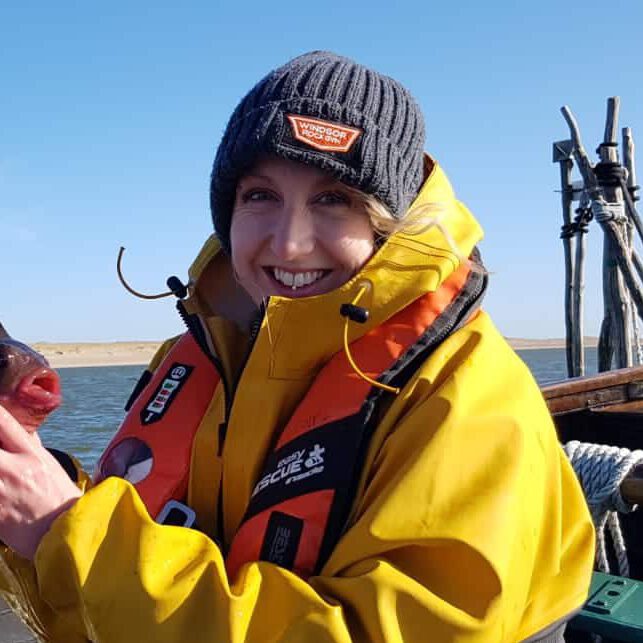IN WHAT WAYS IS THE WADDEN SEA IMPORTANT FOR LARGE FISH?
One of the more understudied groups hitherto is that of larger fish that outswim regular monitoring fishing methods or are too scarce to show up in monitoring fykes. This group consists of species such as sea trout, grey mullet, sea bass and tope shark. At present, we know little about the function of the Wadden Sea for these larger species. The advantage of large fish species over small ones is that we can follow them individually by equipping them with a transmitter. This way we can learn how and when these species use the Wadden Sea and where and when potential bottlenecks occur. The Wadden Sea once had a rich fishing culture, whereas now there are only a few professional fishermen left who fish for mullet and sea bass. If the larger fish species recover, there may be room again for sustainable, traditional fishery and/or recreational fisheries.
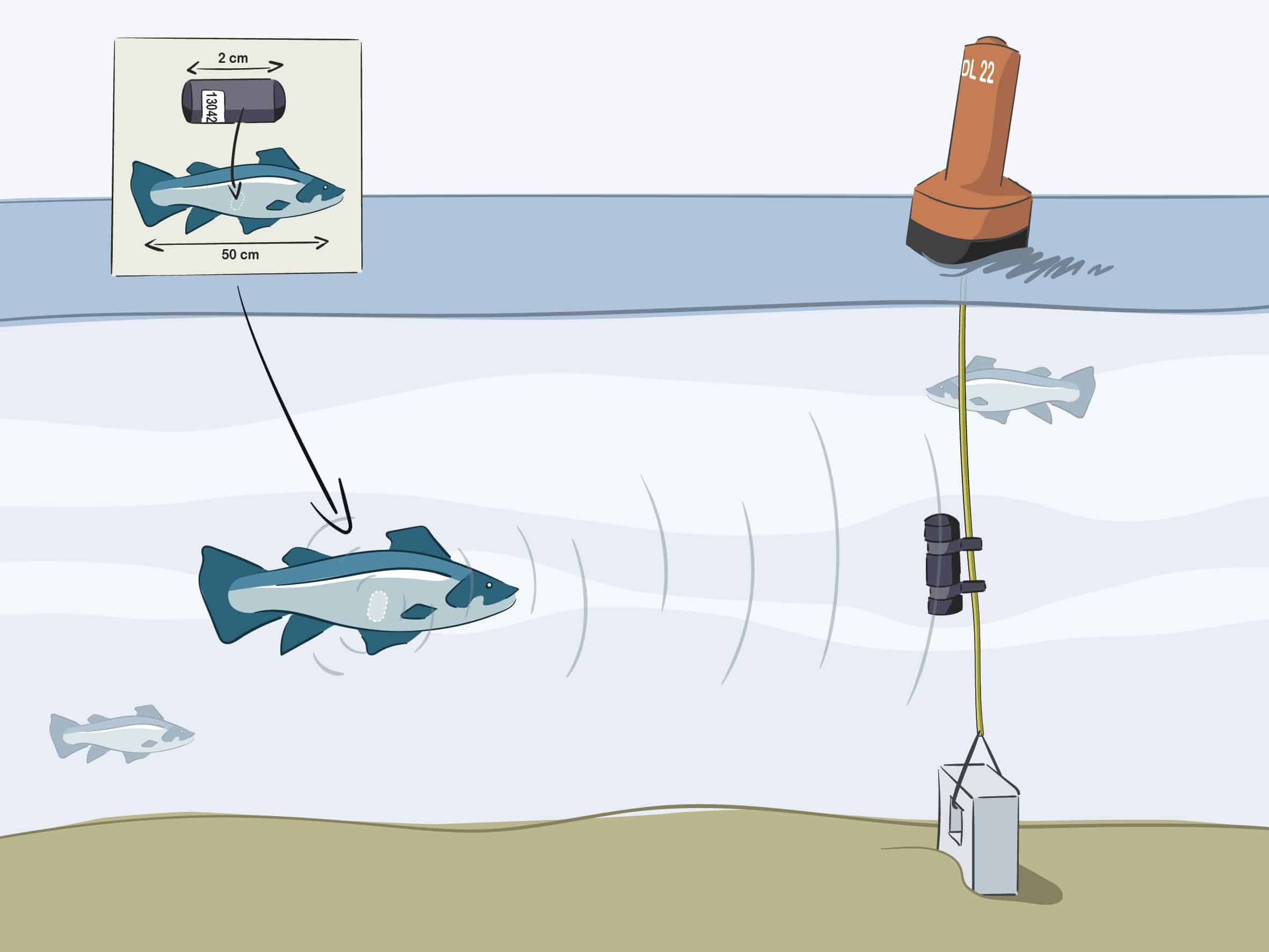
Large fish are tagged with acoustic transmitters in order to learn more about how they use the Wadden Sea. A network of receivers, some on buoys in the fairway, registers their movements.
Space usage
In order to discover more about the role of the Wadden Sea in the life cycle of these fish, we study which parts of the Wadden Sea they use, why they go there (feeding, spawning) and when they do so. Do the fish move in and out of the Wadden Sea regularly, or do they tend to stick to certain parts within the area?
Effects of and opportunities for fishery
One of the possible causes of the disappearance of large fish in the Wadden Sea is fishery, but little is known about how much fish is caught or bycaught. If large fish concentrate in certain areas at certain times of the year, they will be extra vulnerable to fishing activities. Ultimately, the goal is to provide advice that will strengthen the populations and use of the Wadden Sea and potentially enable the reintroduction of sustainable, traditional fishing methods for large fish.
HOW WILL WE INVESTIGATE THIS?
Tracking fish with transmitters
To learn more about their use of the area, fish will be tagged with an acoustic transmitter. These fish will be caught with the help of professional and recreational fishing companies. A network of receivers will be installed all over the Wadden Sea, using the buoys along the fairways. The strength and size of the transmitters determine the distance over which they can be detected, which varies from 200 to over 800 metres.
Larger fish are fitted with a different electronic device, a data storage tag (DST), which can continuously measure swimming depth, temperature and salinity. The data collected is used to reconstruct the migration routes of these fish further afield than just the Wadden Sea. In order to read these loggers, we need to get them back, for example from fishermen or if they are found washed ashore somewhere. For tope sharks, which use the Wadden Sea as an area to give birth to their young, special pop-up DST are used, which are released after a set time and then send all their data via satellite. Anyone who finds a transmitter can report this to erwin.winter@wur.nl.
By following fish all year round, we discover the spatial and temporal ‘hotspots’ for the various species, as well as where they forage and spawn. By cooperating with fish migration projects in adjoining areas, we can start to get an idea’ of fish movements from entry and exit points on the mainland, via the Wadden Sea to areas beyond (in the North Sea).
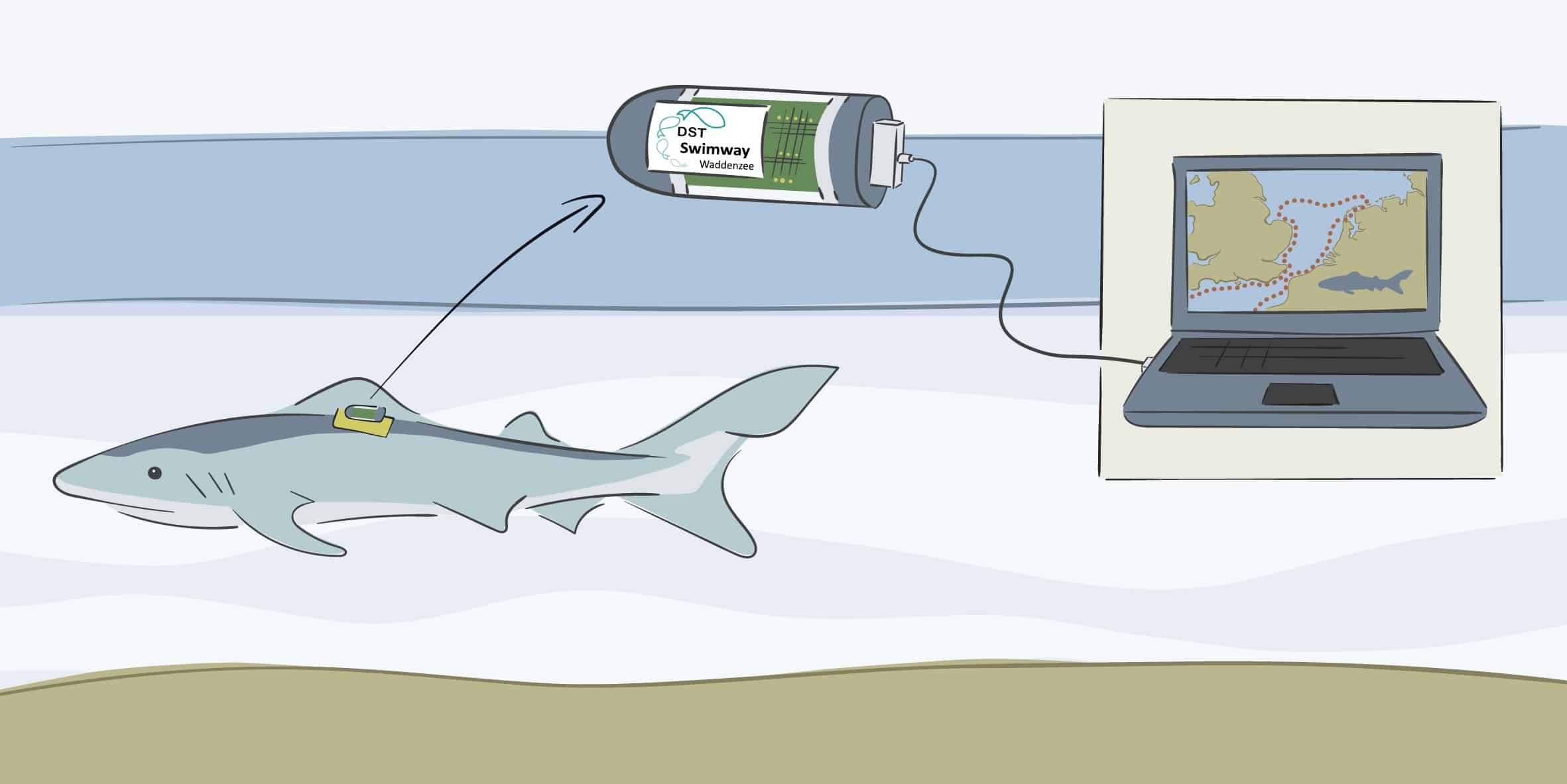
Larger fish are fitted with a Data Storage Tag (DTS) on their body. This can be read if the fish is caught again, or if the transmitter is released and washes ashore somewhere.
Identifying the factors that determine the presence of large fish
By collecting detailed behavioural data via tracking devices throughout the year and linking this to environmental factors, we can work out the key factors or (seasonal) preferences for each of the large fish species studied.
When and whether large fish use different habitats is strongly dependent on local conditions, such as water depth, current, temperature, salinity, oxygen content and composition of the sediment, food supply, and the location and connectivity with respect to other habitats. We use hydrodynamic models to map the linkages between local conditions and behaviour. We can then also compare the use of areas that have been closed or are due to be (temporarily) closed with that of other areas.
Tracking of released sea trout
Some species are given a helping hand by releasing young or adult animals. In the Vissen voor Verbinding (Fishing for Connection) project, for example, juvenile sea trout have been released into the upper reaches of the streams that flow into the Wadden Sea via Lauwersmeer lake. Some of the trout are marked and tagged, so that the contribution of this release to the total quantity of sea trout in the Wadden Sea can be measured. In this way we map the complete migration routes of the sea trout and we can also evaluate the importance of the Wadden Sea.
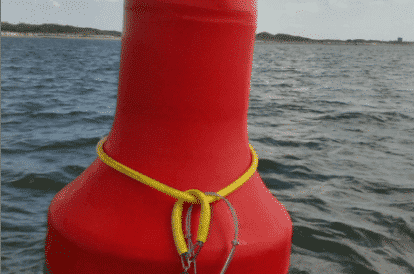
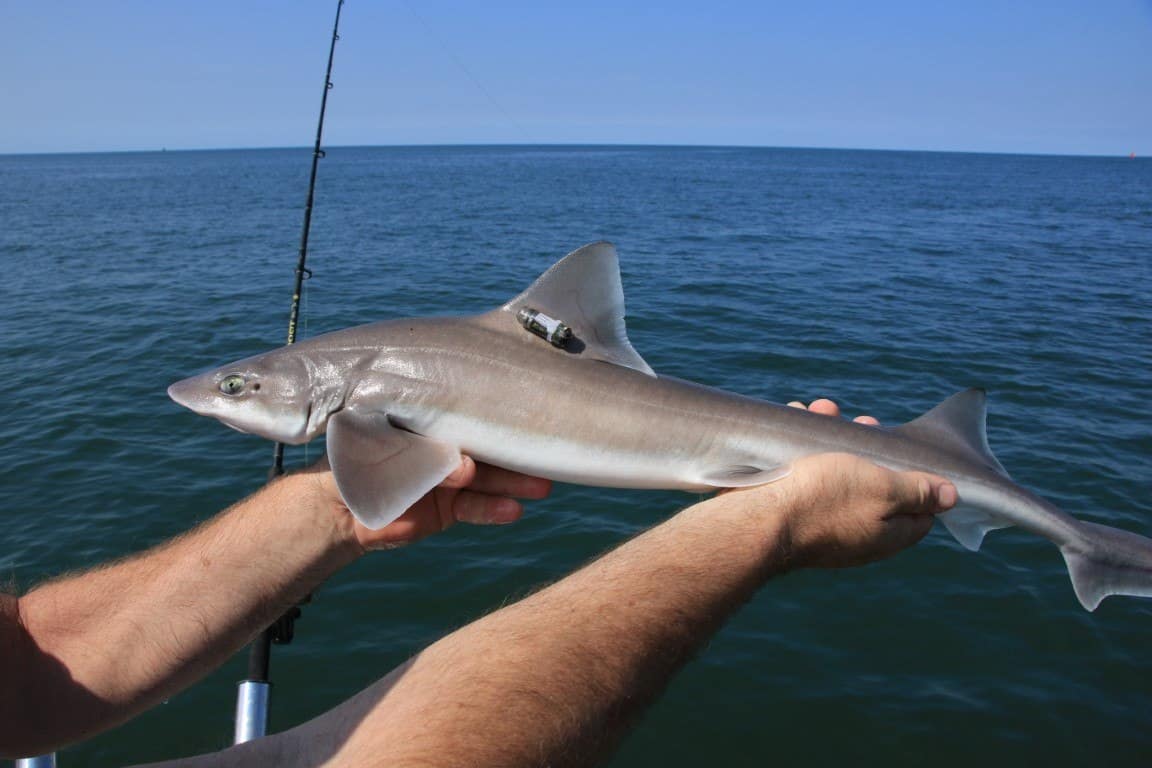
Who?
Research institutes: Royal Netherlands Institute for Sea Research and Wageningen Marine Research
PhD Researcher: Jena Edwards
